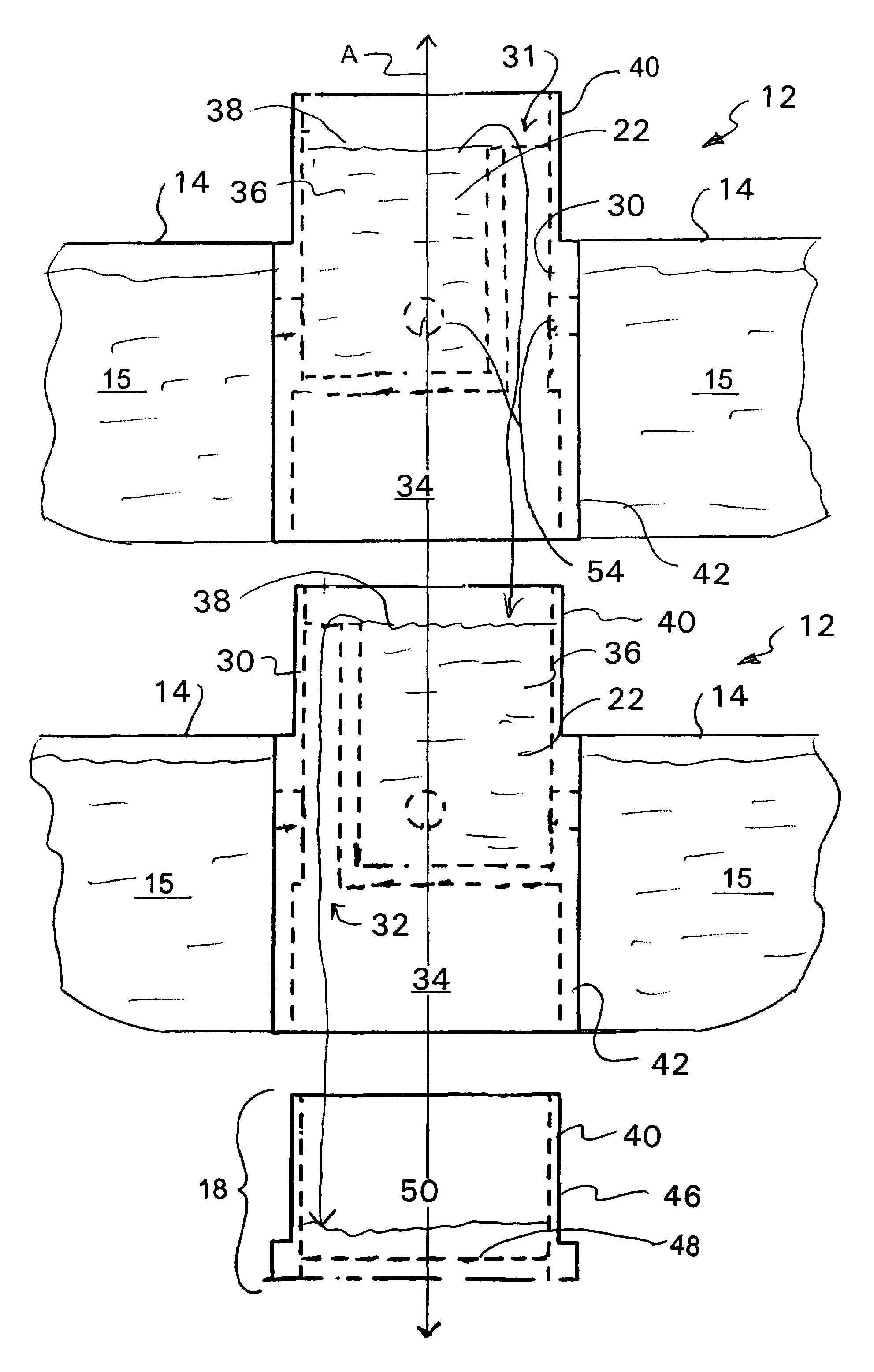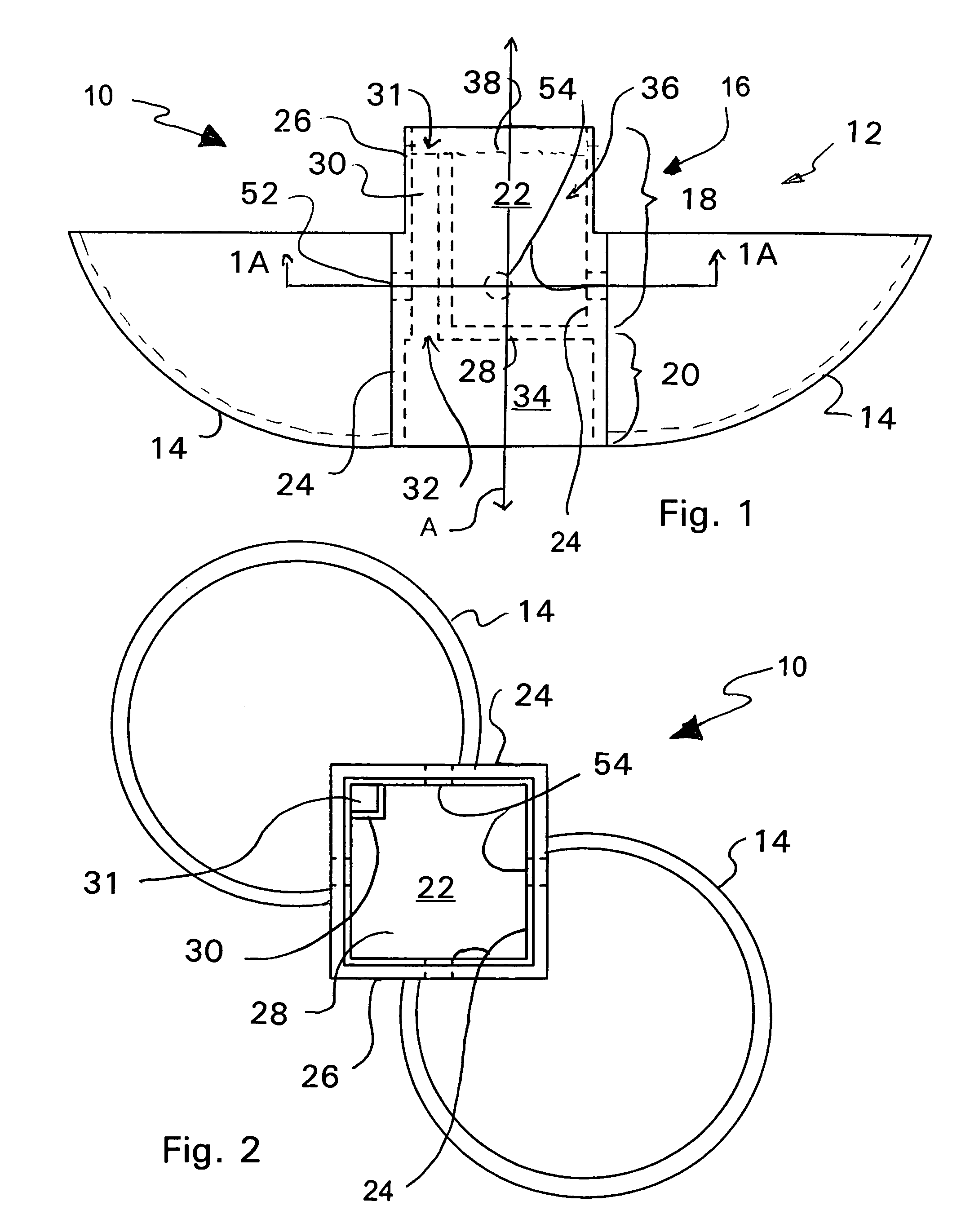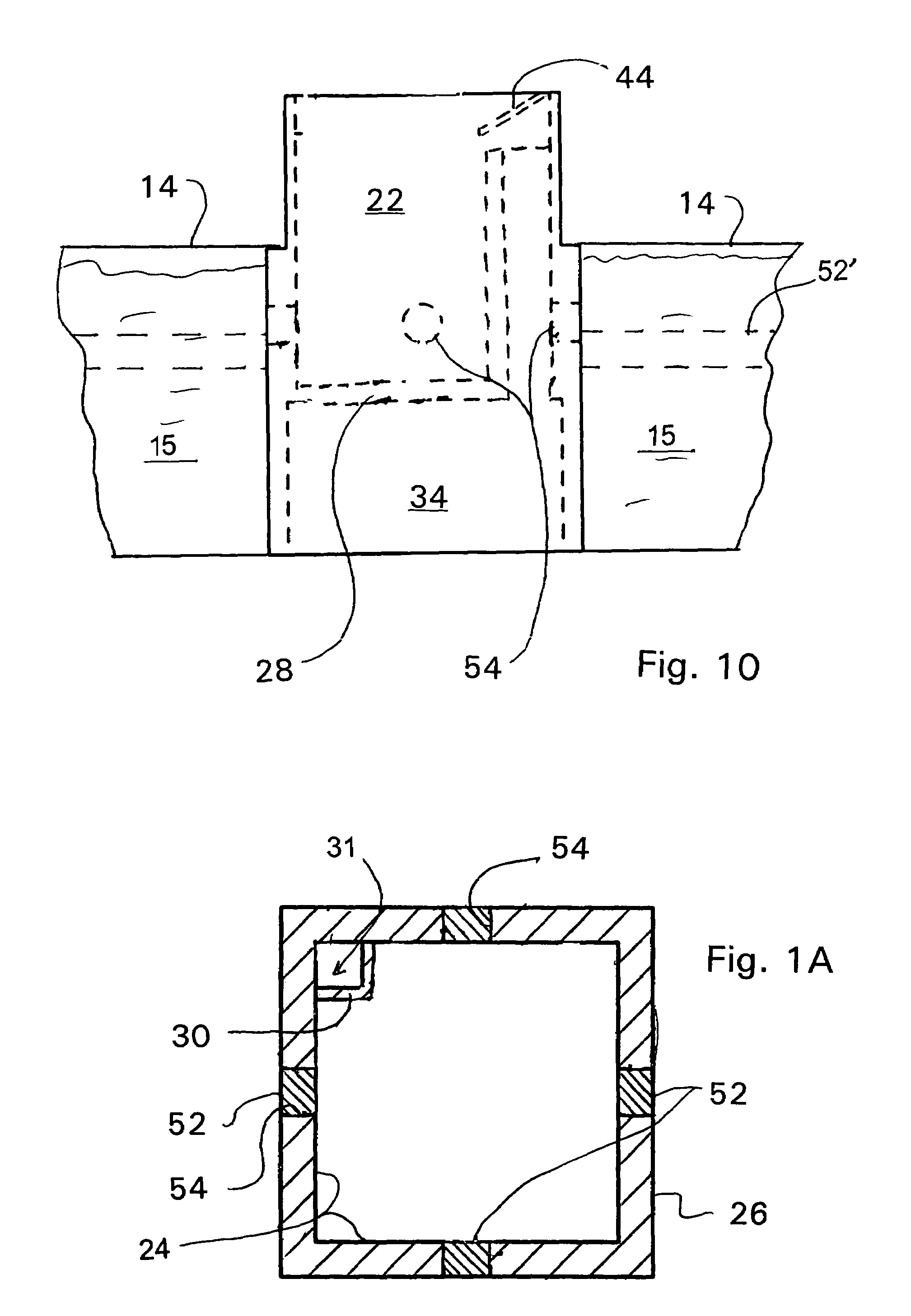Stackable planting containers with capillary watering
a planting container and capillary technology, applied in the field of decorative planting containers, can solve the problems of less efficient capture of moisture in containers, generally unsatisfactory, and nested arrays of containers, and achieve the effects of facilitating filling, facilitating fluid transfer, and facilitating the growth of one or more desired plants
- Summary
- Abstract
- Description
- Claims
- Application Information
AI Technical Summary
Benefits of technology
Problems solved by technology
Method used
Image
Examples
Embodiment Construction
[0029]Referring first to FIGS. 1 and 2, therein are respectively shown a diagrammatic side sectional view and a diagrammatic top plan view of an exemplary stackable container structure 10. In FIG. 3, a diagrammatic side sectional view showing stacking of a plurality of reservoir structures, e.g., two stackable units 12 on a base unit can be seen. Each stackable unit 12, in turn, includes or supports at least one and, as shown in these Figs., a pair of opposed integral growing medium containers 14 which are normally filled, during use, with a conventional growth medium 15.
[0030]As shown therein, each stackable unit 12 includes a centrally located reservoir structure 16 having an upper section 18 and a vertically adjacent and concentric lower section 20 (see FIG. 1) that together form a watertight unit. As noted above, a plurality of growing medium containers 14, generally two, three, four or possibly more growing medium containers 14 are symmetrically arranged radially, formed with o...
PUM
 Login to View More
Login to View More Abstract
Description
Claims
Application Information
 Login to View More
Login to View More - R&D
- Intellectual Property
- Life Sciences
- Materials
- Tech Scout
- Unparalleled Data Quality
- Higher Quality Content
- 60% Fewer Hallucinations
Browse by: Latest US Patents, China's latest patents, Technical Efficacy Thesaurus, Application Domain, Technology Topic, Popular Technical Reports.
© 2025 PatSnap. All rights reserved.Legal|Privacy policy|Modern Slavery Act Transparency Statement|Sitemap|About US| Contact US: help@patsnap.com



